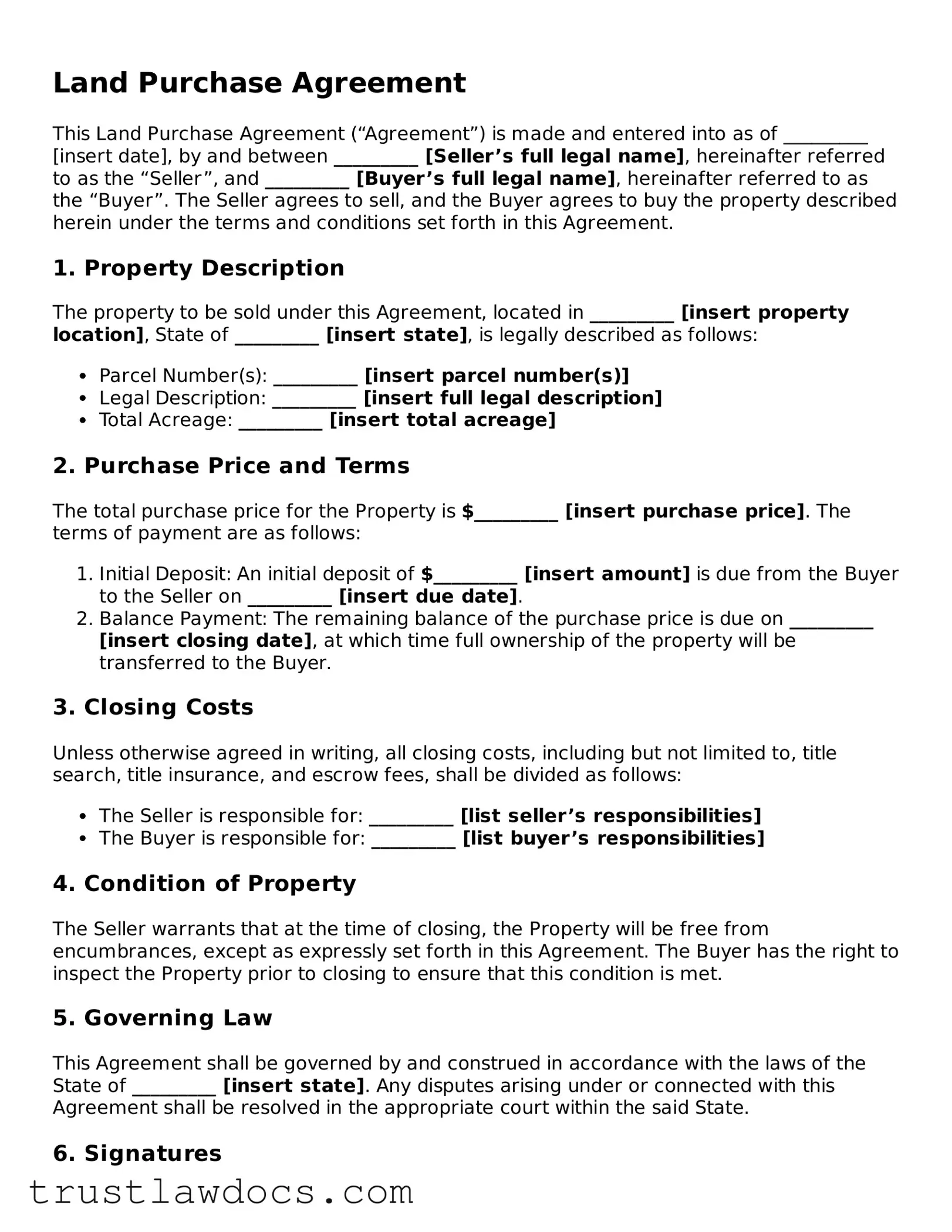What is a Land Purchase Agreement?
A Land Purchase Agreement is a legally binding contract between a seller and a buyer for the purchase of real estate. This document outlines the terms and conditions of the sale, including price, property description, payment plans, and any contingencies that must be met before the sale can be finalized.
Why is a Land Purchase Agreement important?
This agreement provides a comprehensive framework that protects the interests of both the buyer and the seller. It ensures that both parties are clear about their obligations and the specifics of the property being sold. This document also serves as a legal record of the transaction, helping to prevent disputes in the future.
What should be included in a Land Purchase Agreement?
A Land Purchase Agreement should include the legal names of both the buyer and the seller, a detailed description of the property, the purchase price, payment terms, any contingencies like financing or inspections, closing date, and details of who will pay for taxes, insurance, and other fees related to the property transfer.
How does a Land Purchase Agreement differ from a Real Estate Purchase Agreement?
While a Land Purchase Agreement specifically relates to the sale of vacant land, a Real Estate Purchase Agreement can be used for the sale of land that has a house or other building on it. The terms and conditions may be similar, but the Real Estate Purchase Agreement includes details pertinent to the structures on the land, such as inspections and property condition.
Can a Land Purchase Agreement be customized?
Yes, a Land Purchase Agreement can be customized to suit the specific needs of the buyer and the seller. It is essential to ensure that any added clauses or modifications follow local real estate laws and regulations. Professional legal advice should be sought when customizing this agreement.
Is a down payment required in a Land Purchase Agreement?
While not always necessary, a down payment is commonly included in a Land Purchase Agreement. It acts as the buyer's initial investment towards the purchase price and demonstrates their commitment to the transaction. The specifics of the down payment, including the amount and terms, are negotiable between the buyer and the seller.
What happens if a party breaches a Land Purchase Agreement?
If a party fails to abide by the terms outlined in the agreement, it is considered a breach of contract. The non-breaching party may pursue legal remedies, which can include compensation for any financial loss or enforcing the terms of the agreement through legal action.
Can a buyer back out of a Land Purchase Agreement?
A buyer can back out of a Land Purchase Agreement if contingencies outlined in the agreement are not met. However, if the buyer withdraws without a contractual basis, they may lose their deposit or could be subject to legal action by the seller.
Who prepares the Land Purchase Agreement?
Typically, the seller or the seller’s real estate agent prepares the Land Purchase Agreement. However, it's advisable for both buyer and seller to review the agreement thoroughly and consult with legal counsel to ensure that their rights are adequately protected and the terms meet their needs.
